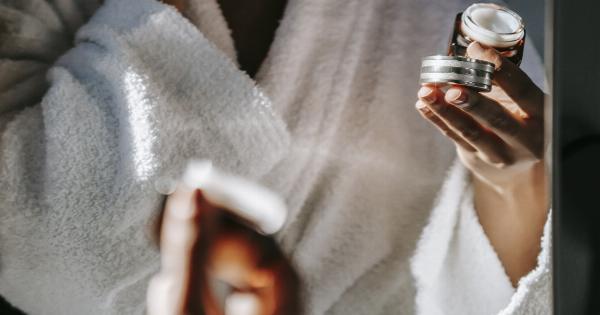Accidents happen and sometimes we end up with cuts and scratches on our skin or on our belongings. It’s essential to take care of these wounds right away to prevent infection and promote healing.
Here are some quick fixes for scratches and cuts that you can use at home:.
1. Clean the Wound
The first thing you need to do is to clean the wound. Use cool water and mild soap to gently wash the area around the cut or scratch. Don’t use hot water as it can damage the skin and cause more pain.
Rinse the wound thoroughly and pat it dry with a clean, soft cloth. Avoid rubbing the wound as it can cause further damage.
2. Apply an Antiseptic
After you’ve cleaned the wound, you need to apply antiseptic to prevent infection. You can use hydrogen peroxide, rubbing alcohol, or an iodine solution. Apply the antiseptic with a cotton ball or a sterile gauze pad.
Be sure to cover the entire wound with the antiseptic solution.
3. Apply a Bandage
Once you’ve applied the antiseptic, cover the wound with a bandage. This will protect the wound from dirt and bacteria. If you have a large cut or a deep wound, use a sterile gauze pad and secure it with medical tape.
Change the bandage at least once a day or whenever it gets wet or dirty.
4. Rest the Wound
If you’ve injured yourself, it’s important to rest the wound. Avoid using the affected body part as much as possible to give it time to heal. If you have a cut on your hand or finger, avoid using that hand for everyday tasks.
If you have a cut on your leg, avoid walking or standing for long periods of time.
5. Apply Heat or Cold
If you have a cut or a scratch that’s causing inflammation or swelling, you can apply heat or cold to the affected area. Use a cold compress for the first 24 hours to reduce swelling and inflammation.
After that, switch to a warm compress to promote healing and relieve pain.
6. Use Essential Oils
Essential oils have been used for centuries to promote healing and reduce inflammation. Tea tree oil and lavender oil are great options for treating cuts and scratches. Apply a few drops of the oil directly on the wound and cover it with a bandage.
Reapply the oil and the bandage once a day.
7. Take Pain Relievers
If you have a deep cut or a large scratch, you may experience pain or discomfort. You can take over-the-counter pain relievers such as acetaminophen or ibuprofen to ease the pain.
Follow the recommended dosage on the package and avoid taking more than you need.
8. Follow-up with a Doctor
If you have a cut or a scratch that’s not healing or is causing extreme pain or discomfort, you should seek medical attention. A doctor can examine the wound and prescribe antibiotics or other treatments if necessary.
Don’t wait too long to seek help as untreated wounds can lead to serious infections.
9. Prevent Future Accidents
One of the best ways to prevent scratches and cuts is to be proactive. Wear gloves when handling sharp objects or doing manual labour. Use safety equipment such as helmets, knee pads, and safety glasses when necessary.
Keep your work area clean and free of clutter to reduce the risk of accidents.
10. Watch for Signs of Infection
Even with proper care, wounds can become infected. Watch for signs such as redness, swelling, pain, or discharge. If you notice any of these symptoms, seek medical attention right away.
An infected wound can lead to serious health problems if left untreated.





























